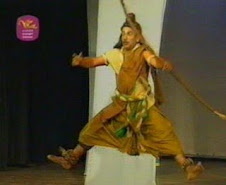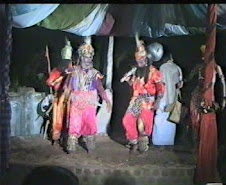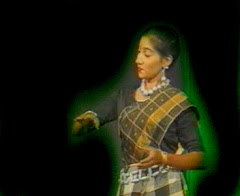.jpg)
.jpg)
.jpg)
.jpg)

THE TRADITIONAL TAMIL THEATRE OF EELAM TAMILS
BALASUGUMAR
The Origin Of Drama
There are many factors highlighted for the Origin of Drama. Yet, the perception that the Play had originated from the rituals proves to be strong and something that remains a proven fact today. “As man has the inherent trait to imitate something or someone when he attempted to imitate the actions and activities of fellow-human-beings and the godly – beliefs Drama came into being”. Today, the widely accepted and scientifically established contention is that Drama originated from rituals.
The social and economic activities of the ancient man had were closely associated with Hunting, which was the prime means of livelihood then. Before leaving for hunting the men would mimic and enact their hunting and it was rendered as a performance in their place. The people believed that such a rendering would yield them more prey and they could hunt more animals. And it was this which was in a more organized manner formed the basis for Drama in the later years – so feel the researchers. George Thomson observes that the rituals too are collective work, but it is an activity separated from the routine of earning one’s daily-bread.(2)
In a life where the people are ethnically grouped, if they have plants or animals as their clan-symbols they reveal details about them, such as where to find and collect them, their distinct features and habits, and at times the ways in which they could be caught and dealt with and how they should be killed (in case of animals), in the form of Koothu.(3)
And the people used these same rituals for getting food from the Mother Earth. They categorized the ghosts and spirits into good and evil ones. They imitated the ghosts and spirits in their koothu performances. This was not practised by some individuals alone. The entire clan followed this tradition and participated in the performance. Belief in god and belief in the ghosts and spirits formed the basis of many a ritual. And, with these beliefs the people performed many rituals. Those rituals had ‘Poelach-cheidhal (copying) or ‘Miilach-cheidhal(repeating) as the basis. And, they gave rise to plays in the later years.
It is but natural that Drama could evolve from the ritualistic practices which have the features and elements of Drama in them. This doesn’t mean that all rituals could invariably take the shape of Drama. The rituals should grow out of a religious background. A particular ‘religious ritual’ should be common for all the social groups and it should ensure a sense of security to all and when a ritual has these two basic requirements, it imbibes the elements of Drama in it and it could give rise to a Drama. (4)
DRAMA AS A PERFORMING ART:
Drama remains an art-form performed in front of an audience. The most important aspect of Art is its connectivity, i.e., its ability to communicate. Without this process of communication the evolution of Mankind could never ever be thought of. More than all other forms of communication, the one that was carried out through Art would prove a distinctly different form of art. When we communicate with others in the usual manner it would be direct and transparent. But, the contact made through an art-form would be having more than one direct meaning. Thus, when the drama has a direct, apparent meaning and also another, inner layer of meaning which differs from the apparent meaning, the hidden or covert meaning of the Drama becomes the most important and significant one.(5)
It is only when the Play brings together in a well-knit harmonious blend the various aspects of Drama such as the audience, actors, Drama, Proscenium it becomes a whole; it achieves its wholesomeness. In a play the role of the actor and the way he connects himself with the play is very crucial. A Play doesn’t become a Play just because it is written or sung. It should be enacted. This is the reason why it is called ‘Dhrishti Kaaviyam’ in Sanskrit. Dhrishti Kaaviyam means that which is seen and relished through the eyes. And, the place where the Play is enacted is called Stage r Proscenium(Arangu in Tamil). There is no Play without the Stage. The Stage or Proscenium should be a raised platform slightly above the place where the viewers would be seated or it can be even or slightly lower than that of the audience. The Proscenium is an important and integral part of Drama. That’s why many modern research-scholars of Drama consider the Stage more important than the history of the literary genre called Drama. The internal and external growth that takes place in a society give rise to changes in the shape and design of the Proscenium. So, the Study of Stage invariably become the Study of the society concerned(7).
The place where all the art-forms of a Society converge and merge, the axis where the different art-forms of a society meet and overlap, is the Proscenium. In Ilampooranaar’s(a Sangam poet) commentary on the 55th Suthra of Tolkappiyam he had observed that all the aspects that interest and enrich us in a Drama merge and converge in one spot. The line goes thus: NAADAGAMAANADHU SUVAIPADA VARUVANA VELLAAM ORIDATHIL VANDHANAMAAGAK KOORAL(8).
Drama in the process of learning it, remains a thorough social institution. And, for staging a drama also an opportunity is required most. Mostly it would be an opportunity which would involve the entire community. Therefore, it becomes imperative that we should study Drama as a social activity also(9).
We can also observe that Drama as a performing art is something which becomes a social activity in which the entire society participates. And , it was from the rituals that had the element of Dram in them that the Proscenium took shape.
THE TRADITION OF DRAMA IN THE SANGAM AGE AND THE ORIGIN OF TAMIL DRAMA:
In the history of the Tamils the period from the First Century A.D till the Third Century is considered very important. In that sense, the rituals which where in vogue in the period before the origin and growth of the Greek Drama are considered very crucial for the evolution of the Western Drama. Amidst the Greeks there existed many a religious ritual. But, the religious ritual called ‘ADAIYOSINIS’ which was a widely practised and accepted ritual by all the communities and also the one which brought together the people of different sects and tribes had gained the opportunity of turning into a proscenium.
It is in this background that we have to understand the origin of Tamil Drama and in what ways it had been associated with the Customs and Traditions of the Sangam Age. The Customs and Traditions and also faiths and beliefs that were in vogue among the people of the Sangam Age point at the source and origin of Tamil Drama. The information that we get in the various Sangam Literary Works such as Pathupaattu, Ettuthokai etc., tell us the ancience of the Tradition of Tamil Drama. Particularly, the various rituals that we come across in the Works of Sangam Literature like Aka Naanooru and Pura Naanooru have the element of Drama in them. Information about KOTTRAVAI VAZHIPAADU, AACHIYAR KURAVAI, INDHIRA VIZHA give us the Tradition of Classical Tamil Drama. More than these, the various rituals called ‘KARUVALACH-CHADANGUGAL’ which take place in the time of war and the dance-forms like MUNTHER KURAVAI and PINTHER KURAVAI are also give us the Tradition of Drama which was in vogue amidst the ancient Tamils.
Details about Drama which are highlighted in the poetry of Sangam Age, through symbols and images and also details about the people of different walks of life, such as KANNULAR, KOOTHAR, AGAVUNAR, VIRALIAR etc., seem to have close association with the Tradition of Classical Tamil Drama. The world renowned Tamil Classic SILAPPADHIKAARAM gives us a lot of details about the literary genre called Drama.
Through the Literary works of Tamil we come to know that since the time of the Sangam Age itself a Tradition of Drama had come into being in the Tamil community which had evolved over the years. We see the way the ‘Karanaas’ having the element of Drama such as VERIYAATTU, THAINEERAATTU, KALAVELVI, MUN-THER KURAVAI, PIN-THER KURAVAI were nurtured by those who had Drama as their means of livelihood, such as those who were called KODIYAR, KANNULAR, VAIRIYAR etc., had sprouted as Drama in Kalithokai and matured in SILAPPADHIKAARAM through the character of Madhavi (10).
Today, in Tamil Nadu at a time when the research-studies having their focus on finding the roots of Tamil Drama have gained momentum ‘Theru-Koothu’(Street-Play) is identified as the Proscenium with its distinct characteristics of the Tamil Tradition and Culture. And, it is worthy of mention here that the roots of Theru-Koothu have close links with the Reading of The Story Of Mahabharatha.
THE ORIGIN OF THE TAMIL DRAMA OF EELAM : The recent research-works on the Sri Lankan Tamils have highlighted and established their distinct socio-cultural and literary identities. Their history of Drama is closely associated with the history of their Tradition and Culture. Among the Eelam tamils there had been various groups and different methods of performing various rituals. And, research-work should be initiated in right earnest to find out which of these rituals had the element of Drama inherent in them. From religious ritual the Drama had traveled along an upward, evolutionary path. This is the common norm(11). And the research-scholars divide this evolutionary passage into seven stages and explain their distinct features and characteristics(12)
THE FIRST STAGE IN THE EVOLUTION OF EELAM TAMIL DRAMA:
We should keep in mind the fact that all these seven stages are clearly seen in the history of Eelam Tamil Drama. The way the research scholars of Drama have the Greek rituals as the basis for the Origin of World Drama, the proscenium of Eelam Tamil Drama too has sprung out of religious rituals. And, when the genre called Drama is born and grow of and for religious purposes we can observe three main stages in its evolution.
Drama is but an institution functioning within the social parameters. Hence, while studying the evolution f a society the above-mentioned three stages should be taken into consideration and closely observed.
Many scholars who have undertaken in-depth Study of the Hisotry of World Drama have listed out the important basic elements for its success. The Tradition of Greek Drama commences from things and beliefs associated with the Greek god Dyorcinas. The Tradition of European Drama is said to have been originated and evolved along with the rituals of Christianity. The Tradition of Indian Drama is considered to have originated and evolved from the Traditional Dramatic Forms such as Yakshagaana and Yathra. The various Traditions of Drama that are in vogue in the Eelam community such as Kolam, Chokkari etc too are based on such elements. In totality, it is an established fact that the religious rituals had formed the basis for one and all. Hence, with the realization that the Tradition of the Tamil Drama too abides by this common feature and has originated from and evolved through the religious rituals, we can arrive at a clear picture of the origin and growth of the Proscenium of Eelam Tamils.
THE RELIGIOUS RITUALS ASSOCIATED WITH DRAMA:
When we speak of the Eelam Tamils Yaazhpaanam, Vanni and the Eastern parts are considered to be their native soil. Having as the basis for his Study the rituals that are commonly being practised among the people of these regions, especially those living in Mattakalappu and Mudhoor regions Kalanidhi C.Mounaguru has divided these rituals into four categories:
2) The ritual of someone else dancing under the guidance and supervision of the religious – head.
3) The religious ritual having Tales of Traditional Beliefs (Aidheegak-Kadhaigal) included in it.
4) The religious ritual wherein the events of Drama began to separate.
THE RITUAL WHEREIN THE RELIGIOUS HEAD WOULD HIMSELF DANCE AS THE DEITY:
The religious ritual called Kumaaradheivach-Chadangu’ which is in vogue among the people belonging to the Veda Vellaalar clan living in the Mattakalappu region shows the ancient form of worship and that of Performance of Dance. On an assigned day every year a shamiana would be erected for this purpose either in the village or in an adjacent area outside the village and in this place the ritual would be performed. And, there would be exclusive songs sung for them and dialect used on that occasion. The drum-beats known as ‘Kottu’ holds an important place in this event. Here, the God would alight on the priest himself and dance. This Poovagar would be chosen traditionally. This ritual would go on for seven days at a stretch. The seventh day ritual would be rich in its element of Drama. THEN EDUTHAL, THENPOOCHI KUTHUDHAL, AANAI KATTUDHAL, MAADU KATTUDHAL and such other events would be performed on the seventh day of the ritual. In this, everything would be performed through ‘abhinaya’ and appropriate songs. Rituals such as these are seen in places like MUllaitheevu and Moodhoor too. The ritual called Veetaith-Thiruvizhaa (the Ritual of Hunting) is also somewhat like this. In Vettait-Thiruvizhaa the scene of some men in the guise of wild animals destroying the field just outside the Temple and the Deity coming out and hunting them and returning to the temple would be enacted using Abhinaya. Here we see the continuation of the socio-economic events that were in existence among the ancient people and the way their continuation takes place in the form of rituals here. Here we should keep in mind the fact that when that ancient style of living was destroyed , in order to preserve the tradition and continuity they are being enacted and performed with the element of Drama. Here the ritual and the drama are beautifully blended and this reminds us of the ancient Drama. Many research scholars of the History of World Drama have found the tradition of ancient Drama staying alive in the midst of the marginalized sections of people who are at the lower rungs of Civilization. And, the fact that such an ancient tradition of Drama is alive and active in our society is something invaluable(14).
THE RITUAL OF SOMEONE ELSE DANCING/PERFORMING UNDER THE GUIDANCE AND SUPERVISION OF THE RELIGIOUS – HEAD /PRIEST.
Another set of religious rituals associated with the Vanakka Murai performance of Drama which can be seen among the Tamils, gives us the next stage. In particular, in regions such as Mattakalappu and Moodhoor there are more than hundred different ways of performing rituals for the minor-deities (SIRU-DHEIVANGAL). And, these rituals have two main aims and objectives.
One set of rituals is being performed to pray for rain and the other is to get rid of ailments. And these rituals and the methods of performing them prove inclusive of the beliefs of a Society which had imbibed in it the change from being in the stage of searching for food to the stage of producing food-crops. During the period when the community of people who had earlier practised hunting as their means of livelihood switched over to agriculture, they needed rain. That’s why they worshipped Maariamman. The term Maari in Tamil refers to rain(Mazhai). Thus, Maariamman is the Goddess of Rain(15). In Mattakalappu and Moodhoor areas the worship of Goddess Maariamman has still an important place in the everyday life of the people. Once in a year this ritual called Maariamman Sadangu would be performed. This ‘Maariamman Kulirthi Sadangu (Appeasing Goddess Maariamman) is rich in dramatic elements.
On the final day of the Ritual, the person who would sport the guise of Goddess Maariamman will be disguised as a female and he would go round the temple, accompanied by the group of small girls called ‘Aaraathip-Pillaigal and also surrounded by the sound of Kuravai from the assemblage of viewers. And, he would sprinkle the kumkum-mixed water from the container placed in front of the temple, on all the devotees gathered there(16).
The ritual known as Kannagich-Chadangu is also considered to be
a ritual of prosperity. This ritual goes on for seven days at a stretch and comes to an end on the day that follows ‘Vaikaasi Pooranai’. The ritual is completed with singing ‘Kulirthi’. It is worthy of mention that the rituals of all these seven days are based on the various important events in the life of the legendary Kannagi. Another ritual called ‘Kombu-Murich-Chadangu’ is closely associated with this Kannagiamman ritual. This ritual is also referred to as Kombu-Vilaiyaattu. This too has the objectives of receiving the benefits of rain and for recovering from ailment. In Kombu-Murich-Chadangu the entire village would be divided into two groups and they would be referred to as Vadaseri and Thenseri. The rope called Vadam would be tied with two curved branches taken from a specific tree and everyday the two groups would engage in a rope-pulling competition of sort. Everyday one of the branches would give way. After the event, during night hours one group of people would sing songs abusing the other section and singing in praise of their own group. These events have the dramatic elements ingrained in them. We can also observe that this event remains not just a ritual alone but also as a festival of merriment with song and dance sequences.
THE RELIGIOUS RITUAL HAVING TALES OF TRADITIONAL BELIEFS (AIDHEEGAK-KADHAIGAL) INCLUDED IN IT.
In the life of the villagers the gods and deities having close connections with the tales of traditional beliefs, such as KAALI, NARASINGAR, VAIRAVAR, KAATHAVARAAYAN, VEERABA_ GUTH-THEVAR, ANUMAAR, AYYANAAR and their modes of worship and prayer have rich elements of Drama ingrained in them. The people having listened to the characteristics and descriptions of these legendary characters or gods and deities from the Puranas make use of them in the worship of the god concerned and dance accordingly which have the element of Drama in it. For instance, the person who would enact the role of the God Narasingan would have adequate make-up to resemble Narasingan’s face and appearance and enact the way Narasingan killed the evil Iranyan. The entire episode would be enacted. In the same way the person who would be dancing as Hanumaar would consider himself as the deity and perform all the pranks that a monkey would do and so perform his song and dance sequence. They who dance as Mariamman would bring forth in their performance all the delicacies and soft movements of ladies and so dance. All these have the power to retrieve and strengthen the traditional beliefs of the people concerned.
We should remember here the way dramatic elements surface while the ‘Kalippuch-Chadangu’ is being performed. Based on the belief that a person is possessed by some evil spirit this ritual is carried out. And, in the ritual performed to drive away the evil spirit the dialogue that takes place between the person possessed and the priest would have the elements of Drama. This resembles the ritual called ‘Thoyil’ which is in prevalence amidst the Sinhalese. It is the traditional stories that had been in vogue among the people which in course of time came to be performed as Koothu. We can well observe the fact that the tales told in these Koothu performances and the ones that we have already seen, the gods and deities of traditional beliefs, have close links with one another. Here, the priest would guide and some other would dance and perform. In the same way, in Koothu also the performers would sing and dance under the guidance and supervision of Annaaviyaar. We can thus see here the way the actors come into existence.
THE RELIGIOUS RITUAL WHEREIN THE EVENTS OF DRAMA BEGAN TO SEPARATE
As we have been seeing the continuous process of the evolution of Drama originating from religious ritual, we can now see the way Drama coming apart from the religious ritual and becoming a separate entity which could be clearly witnessed in the religious rituals taking place in some of the temples. Of them, the Dhraupathi Amman Chadangu(ritual) of Paandiruppu Dhraupathai Amman Temple and the Krishnan Chadangu of Thimilaitheevu Krishnan Temple are worth mentioning. Many important events and episodes that we come across in the Tales of Mahabharatha are being performed in Paandiruppu Dhraupadhai Amman
Chadangu. Those who perform on this occasion imagine themselves to be the Pandava brothers and Dhraupathi. Especially, the episodes of Archunan Kalapali,(the sacrifice on the war-front) Vanavaasam,( living in the woods) Archunan Thavam(the penance of Archuna) etc., are being enacted in the form of a drama.
It is to be particularly noted here that all these events are dramas as well as rituals at one and the same time. Also, this set of performances or rituals differ from that which we have seen already. In this ritual which goes on for eighteen days at a stretch , the event on the sixteenth day performs the tale of Pandavaas’ undertaking the journey into the woods to live there in hiding. The ritual of the seventeenth day is the penance of Arjuna. With Arjuna wearing the saffron robe and going along the streets the priests would sing the accompanying songs. The fight that takes place between Perandachi and Arjuna when the latter would be going to perform his penance is a very interesting episode. Then follows the ritual of the great sacrifice of Aravaan. There would be a human form made of sand, resembling Aravaan and with Dharmar holding its head Dhraupadhi would sever his head – so the scene would be enacted. Those who enact the specific roles of the Mahabharatha characters would don the disguise of the assigned characters.
In the ancient rituals which we have discussed in the previous chapters the characters were revealed through expressions and gestures. But here, this ritual blends expressions, gestures as well as disguise and thus gives it the semblance of a Drama. This brings to our mind the memory of the Greeks’ ritual of Dionysus. In the same way, there would be a nine-day festival celebrated annually in the Krishnan Temple of Thimilaith-Theevu. Right from the birth of Lord Krishna till the death of Kamsa, many events are being enacted in the open space outside the Krishnan Temple. This ritual seems to have very close connections with the festival called Krishnaanattam’, of Kerala. When a separate, in-depth research-work is undertaken on this subject we can come to know more about these similarities and the reason behind it.
The performance known as Kaaman Koothu which is in vogue in the ‘malaiyagam’ is also on the same line. Here the tale of Lord Shiva fighting against Kaama is being enacted. When we take into account these rituals as a whole we can see the new trend in them, which, unlike the earlier practice where the story and the characters would have close links with the ritual, separates the Drama from the ritual concerned. In these rituals the inside and outside of the temple formed the proscenium. Those who took part in the rituals performed the roles as actors. The priests sang aloud songs in chorus at the background. Here, instruments such as UDUKKU, PARAI, MATHALAM were used as important accompaniments for the play.
Though we cannot call these rituals of the fourth stage as full-fledged Plays, yet they had in them the seeds of Drama, having the four important elements of Drama – Proscenium, Actors, Directors and Audience. The temple itself is the proscenium and those who get possessed by gods and deities and dance deliriously are the actors and the priests direct the whole show and the people, the viewers – always. For a foreign viewer our religious rituals of worshipping and propitiating the minor-deities would surely bring back to memory the ancient mode of proscenium(17).
We can very well observe that the song and dance forms that could be seen in the different ways of performing religious rituals have close links with Koothu which came into vogue afterwards. And, here we can see the Theory that it is from religious rituals the concept of Drama came to be gains credence.
DRAMAS ASSOCIATED WITH RELIGIOUS PURPOSES:
The various rituals that are performed in the temples of the Major deities such as Sooran Poer and Bhoothap-Poer seem to have close links with the ritual related to the methods of greeting and invoking the Gods and Goddesses and they appear to be ritual-based Plays. We can cite as instance the event called Sooran-Poer which take place in the temples of Lord Muruga.
Here a gigantic idol of the Sooran and that of Lord Muruga opposing Sooran, would be there and the performers would divide themselves into two groups – the followers of the Sooran and that of Lord Muruga and the battle between them would be enacted. This performance seems to remind one of the ‘Paavai-Koothu’.
Thus, we can perceive an evolutionary change in the proscenium of Eelam Tamil Drama which has evolved from enacting our life to enacting a story. And, this highlights the transformation of a ritual into a Drama.
These are classical evidences for the presence of ancient forms of Drama among the Eelam Tamils too, seen in the background of World History. When these evidences would be subjected to more scrutiny and research on the basis of the principles of such faculties as Anthropology and Sociology, more and more details and information concerning the ancient life-style of the Tamils, their social-construct etc., would emerge.(18).
We have seen above how the Drama came to be separate itself from the ritual and evolved into a distinct entity. In course of time these Dramas which had come apart, came to include elements of entertainment in it and also absorbing the essence of the Tales of Puranaas and traditional faiths and beliefs and so attained the form of Koothu. The forms of Koothu called Magudik-Koothu, Vasanthan-Koothu and such others form the basis and first-step for the various forms of Koothu that have subsequently emerged.
THE DIFFERENT FORMS OF KOOTHU FREED FROM TRADITIONAL FAITHS AND BELIEFS:
More than the different forms of Koothu that we have known such as VADAMOEDI, THENMOEDI, VADAPAANGU, THENPAANGU, KOVALAN KOOTHU, KAATHAVARAAYAN KOOTHU etc., the research-works that have been undertaken in the recent years have given us the different forms of Koothu that were in existence before these.
The ancient forms of Koothu such as PARAIMELAK-KOOTHU,VASANTHAN-
These forms of Koothu stand midway between those that were entirely based on religious and traditional rituals and beliefs and those forms of Koothu which had a distinctly separate and thorough element of Drama in them.
PARAIMELAK-KOOTHU :
This form of Koothu is in vogue among the people whose means of livelihood is ‘beating the drum called Parai(Paraiyadith-Thozhil), living in Mattakalappu. The open space in front of the temple forms the proscenium for this performance. The viewers would sit in a circle, surrounding the stage. The stage would be on an even ground itself. before the commencement of the Paraimelak-Koothu the chieftain of the clan who is referred to as Moopan would sound a beat on the drum.
The performers who enact this Koothu would have their drums, the parai, tied round their hips and dance(19). In this performance different varieties of ‘parai’ would be used and with that the flute would also be played.
The performers would produce different beats(thaalaas) such as POOSAITHAALAM, KONANGITHAALAM, RAASAVARAVU -THAALAM etc., with appropriate dance-movements, gestures and expressions of the specific thaalaas. The sound of the instrument Parai would also be suitably modified. This form of Koothu which is rarely performed these days might in course of time disappear for ever.
VASANTHAN KOOTHU :
This form of Koothu is wide-spread in areas like Mattakalappu, Vanni, Yaazhpaanam nd Moodhoor. This has close links with Temple and Agriculture. For performing this variety of Koothu a specially erected raised stage in circular shape is used. The months when the peasants would be free after the routine agriculatural work - the Tamil months of Chithirai(April 15 to My 15) and Vaikasi(May 15 to June 15) - are assigned for performing this Koothu. Sowing the seeds, ploughing, ‘Aruththal’, ‘Uppatti Kattal’, and such other activities of Agriculture are depicted in this.
Along with these ‘abhinayaas’ tales from Puranaas and Ithikaasaas and also the traditional faiths and beliefs pertaining to the minor-deities too are enacted in this Koothu. This Koothu is conceived as having Vasantharaan sitting in his throne and also partaking in the song and dance sequences, performing Koothu and his sons too are revel in performing the Koothu with all the relevant ‘abhinayaas’.
The Koothu called Kolam which is in vogue among the Sinhalese has striking resemblance of Vasanthan Koothu.
There would be minimum eight participants and a maximum of ten in this Koothu. Swami Vipulaanandha has also written about Aarukambu Vasanthan in one of his articles(20). Kalanidhi Maunaguru has pointed out that as many as thirty-two different ragas are employed in this Koothu. The stories would be employed in a way that couldn’t be referred to as ‘a separate tale’. But, written-texts are used in this form of Koothu. The characters such as Vedan(hunter), Kuravar(gypsy), Kapparkaaran(boatman), Pallan( ), Palli( ) would be enacted on stage. In this Koothu there would be different dance-forms used in accordance with the distinct nature and livelihood of characters. The arrival of the King is accompanied by soft mode of dancing and that of Hanuman would be accompanied by fast and sturdy beats.
Sporting a headgear and holding two sticks on both the hands and wearing jingling anklets the performers would dance. Instruments like Mathalam and Sallaari are used in this form of Koothu. The ragas in which the songs used for invoking the minor-deities, such as Kuloorthi, Kaaviyam etc., are employed in this too.
Many of the ragas that are employed in Thenmoedi Koothu find a place in Vasanthan Koothu too. Here, we should bear in mind the fact that in comparison to the Paramelak-koothu Vasanthan Koothu reveals a significant growth.
MAGIDIK-KOOTHU :
Magidik-Koothu is different from Vasanthan-Koothu. The term Magidi has associations with Manthra and Divine-Truths which are hidden and secret. In this form of Koothu the minor-deities too come as characters and traditional faiths and beliefs too form the theme-content. Magidi-Koothu is performed in different styles in different places.
In Mattakalappu, three types of Magidik-Koothu are in vogue. The events taking place in this Koothu has close connections with people’s habitation and settlement. All the three Magidik-Koothu have different stories and different shapes of proscenium.
All the three forms of Magidik-Koothu have different stories and proscenium. In Magudik-Koothu we can come across many things connected with the play Kuravanchi. In the Magudik-Koothu performed in Eelam there are several common features. They are:
The prime objective of this Koothu is to entertain the people and to make them happy. The songs and ragas and the rhythmic beats used in the form of Magidik-Koothu which is in vogue in Mattakalappu are also employed skillfully in Vadamoedik-Koothu(21).
THE KOOTHU-FORMS THAT HAVE THE ELEMENTS OF A DRAMA/ A STAGE PERFORMANCE :
As far as the Eelam Tamils are concerned, distinctly different forms of Koothu which are suitable for performing on stage have evolved as a continuation of the tradition of Drama which had originated from the religious rituals and grew. And, we can prove with adequate evidences that it is these that have all the qualifying elements and ingredients to be considered as the Drama and Proscenium of the Eelam Tamils. This tradition of Koothu is not only prevalent in all the regions inhabited by the Tamils, such as Yaazhpaanam, Mattakalappu, Vanni, Trincomalee etc., but also has striking similarities between its different forms.
In Mattakalappu, this Koothu is performed in a specially designed proscenium called Vattakalari. Before the actual performance there would be intense training and rehearsal for minimum seven or eight months and only then the ‘Arangetram’ of the Koothu takes place. Based on the dance and song performances of different forms of Koothu, the make-up, costume, attire, the tales narrated etc., they can be divided into two broad categories – VADAMOEDI and THENMOEDI.
In Thenmoedi the dance-forms are more subtle and refined. In Vadamoedi the dance-forms lack that much of subtleties and refinements and instead there would be fast movements. In Thenmoedi the dance would centre round Varavaattam and Vattakalari and it would be performed in view of the audience on all sides. In Vadamoedi the dance would be directed towards the audience on one side alone. In Thenmoedi the ‘Thaalam’ Theiya thaa theiya would have a significant place and in Thenmoedi the ‘Thaalam’ ‘Thithithaa’ would be very important.
In Thenmoedi the Viruthappaadalgal would be sung in a dragging manner but in Vadamoedi this method of singing is not practised. In Thenmoedi , THAALISAI, ULAA, PARANI, KALITHURAI and such other items that are employed in Literature are used. In Thenmoedi the last line of the song sung by a particular character alone would be repeated by the accompanying singer but in Vadamoedi the entire song would be sung again.
In Thenmoedi the accompanying singer and Annaaviyar and such others would guide the course of the Koothu and take it forward. We can mention the songs that come in Thenmoedi such as Sabaitharu, Sabaikkali, Sabaichindhu as examples to this trend. In the case of Vadamoedi the Koothu would be carried forward through the conversation that take place between the characters.
Those perform the Thenmoedi Koothu would wear light attires. Such attires are a must for this kind of soft dance-form.
The performers of Vadamoedi Koothu would wear heavy dresses. The kingly characters of Vadamoedi would be wearing heavy crowns. The sword, bow and arrow, club and such other weapons used in Vadamoedi Koothu would differ in size and shape from those used in Thenmoedi Koothu. The Vadamoedi Koothu would mostly use tales from Ramayana, Mahabharatha and Ithikaasa whereas those of the Thenmoedi Koothu would mostly have imaginary stories and the Naattaar tales. Of course, there are exceptions too.
More than the various forms of Koothu belonging to these two main categories – that of Vadamoedi and Thenmoedi , the Kaathavaraayan Koothu and Kovalan Koothu which are seen in Vanni region seem to have close links with the Worship of Amman (Amman Vazhipaadu) of the Vanni land. As part of the festival season of Vattraapalai Kannagaiamman Kovalan Koothu is being performed in the villages of Vanni. These Koothu-forms do not fall under an organized Classical norm but remain as forms of Koothu having a lilting character. Many of the research-scholars who have undertaken in-depth Study on Kaathavaraayan Koothu claim that these koothu-forms have evolved from the tradition of beating ‘Udukku and narrating story.
The Vadamoedi and Thenmoedi forms of Koothu which till date remain in Mattakalappu without any change in their basic characteristics, are not so in Yaazhpaanam but have been reduced to the learning stage, losing much of its dance. As a result of this loss of dance, its songs have gained more importance and thus making these forms of Koothu the basis for the Musical Dance which came next.
By and large, when we look at the progress and development of the Traditional Drama and Proscenium of the Eelam Tamils we should take into consideration its roots, its changing trends and the way it had evolved from its initial form to the modern theatre. Though the theory that Drama had originated from rituals holds good as regards the Eelam Tamil Drama, the Kootharangam which we identify today as the Drama and Proscenium of the Eelam Tamils is to be understood distinctly as the steady and continuous onward journey and the culmination of the rituals. Because, research-scholars of Drama like Kalaanidhi Maunaguru would always hold that the traces and impact of the different Koothu forms which are in their learning stages in Tamil Nadu as well as the traces and impact of the Koothu-forms of Kerala and Karnataka can be perceived in the Traditional Drama of the Eelam Tamils(22).
.bmp)
.jpg)
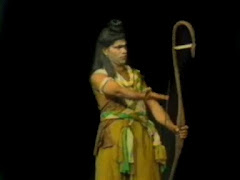.bmp)
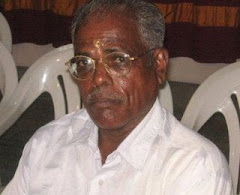
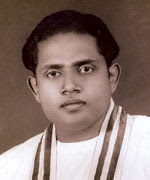
%5B1%5D.jpg)
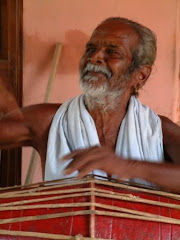
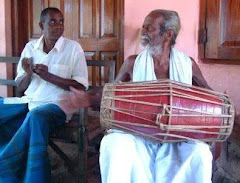
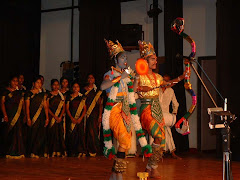

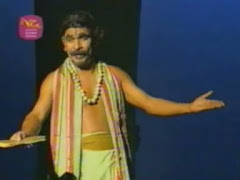.bmp)
.bmp)
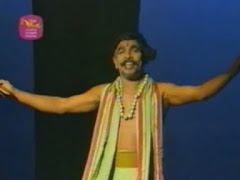.bmp)
.bmp)
.bmp)
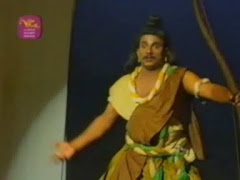.bmp)
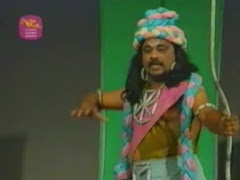.bmp)
.bmp)
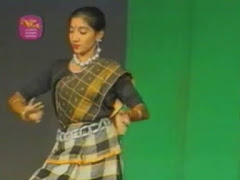.bmp)
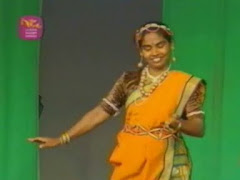.bmp)
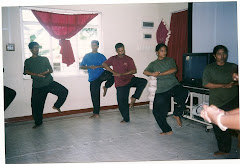.jpg)
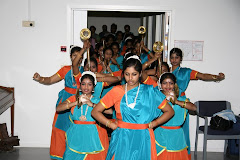

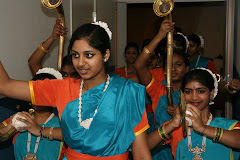
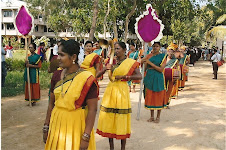.jpg)
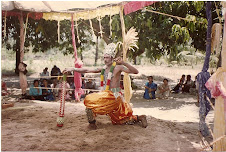.jpg)
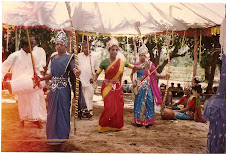.jpg)
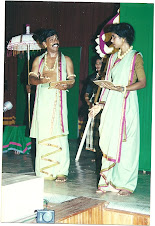.jpg)
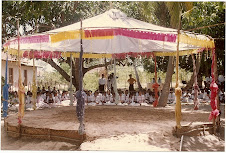.jpg)
.jpg)

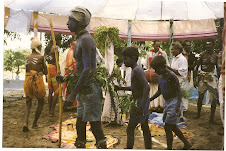.jpg)

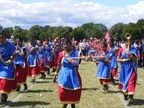
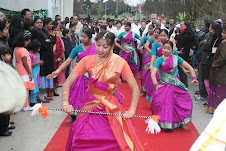
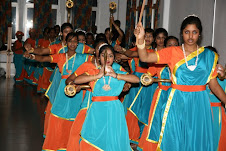
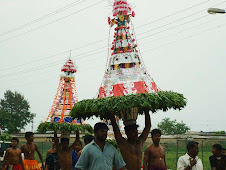
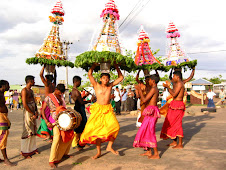
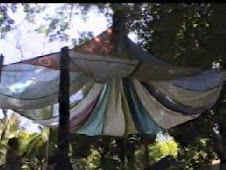
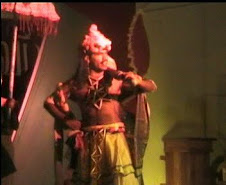
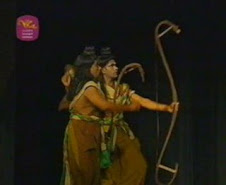.jpg)
